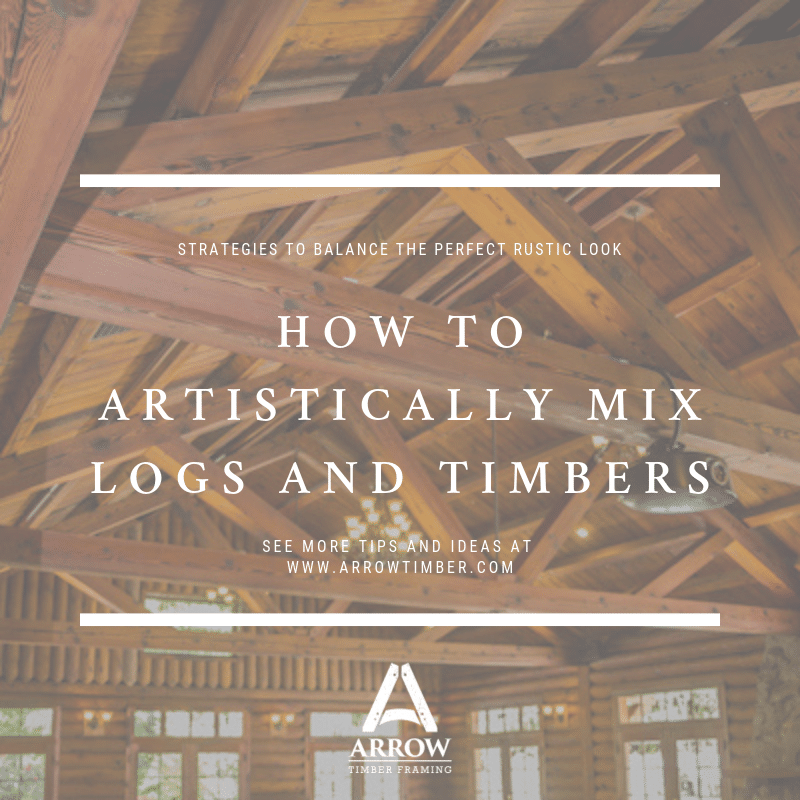Mantels have been used for thousands of years often above fireplaces to display family portraits and heirlooms. They are often requested during floor plan design. Below are six examples of timber mantels in timber frame homes that we’ve built.

Traditional style wood mantel is very simplistic in design that compliments the fireplace arch below it while settling nicely into the stone both above and below.

This mantel surface is not placed up against a wall surface but instead has posts leading up to the ceiling from it.
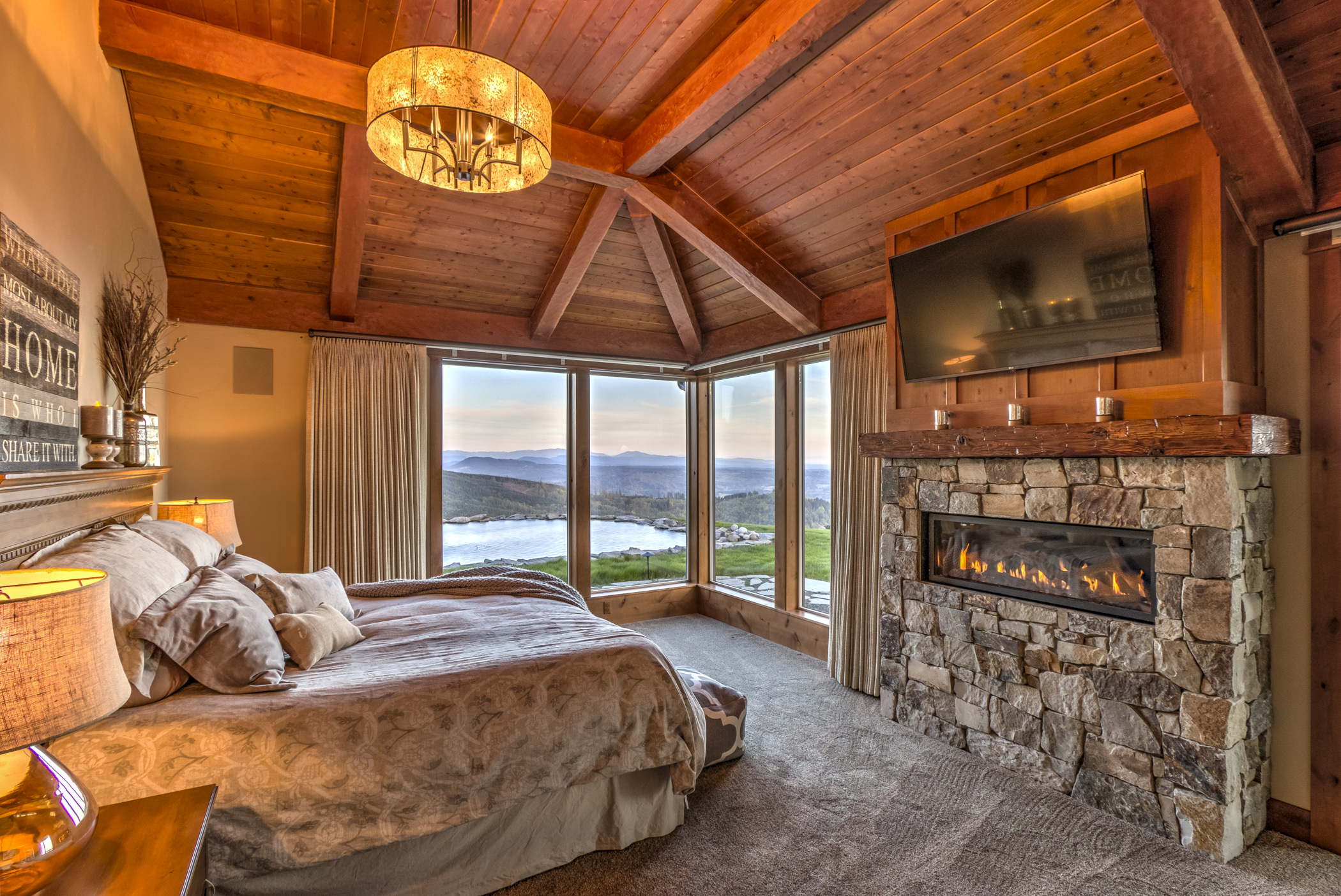
In this gorgeous master bedroom, the mantel breaks up the space between fireplace and tv, setting the stage for candles.
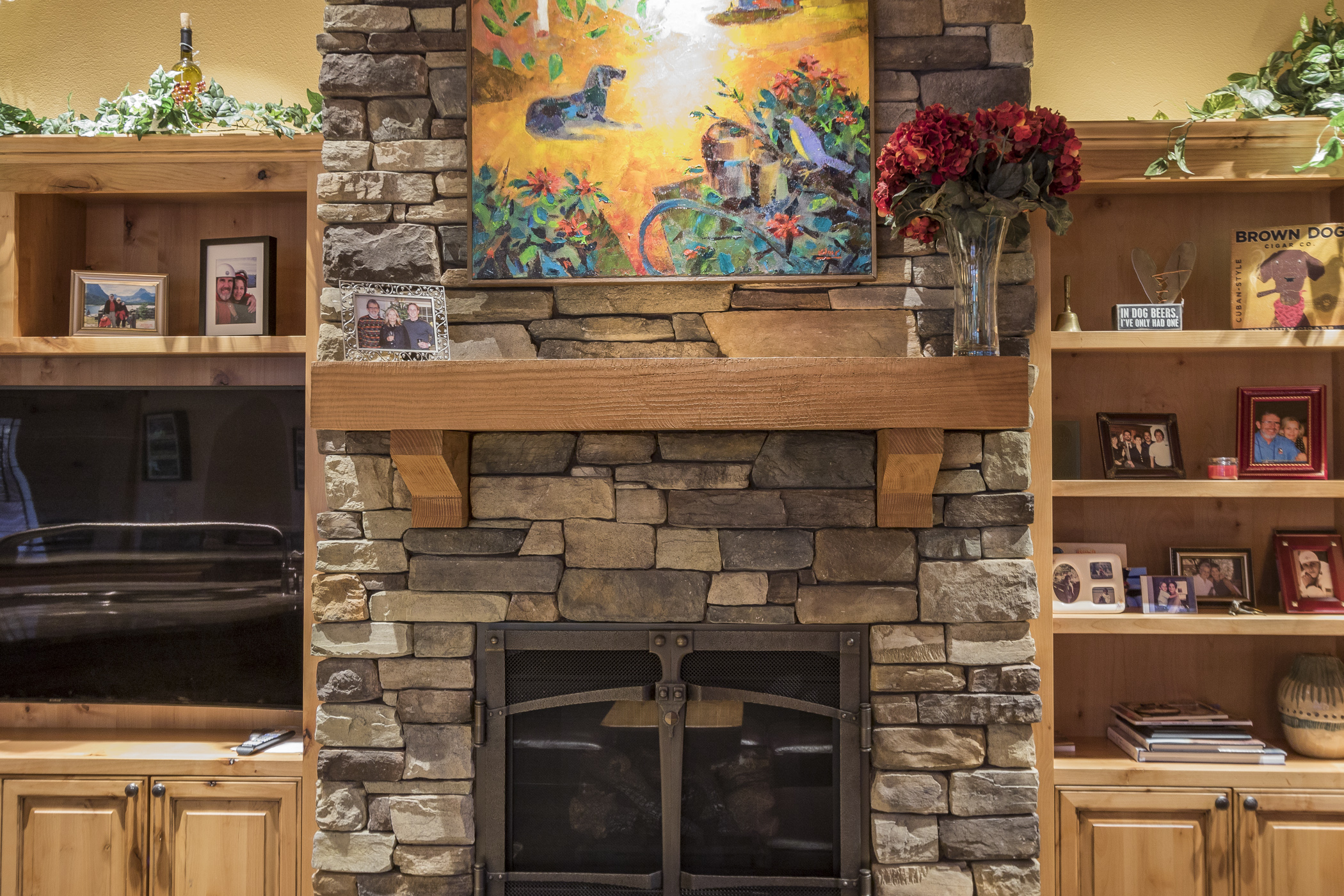
The top piece is a straightforward beam while the supporting corbels have an attractive slope to them that gives this mantel a “classic” feel.
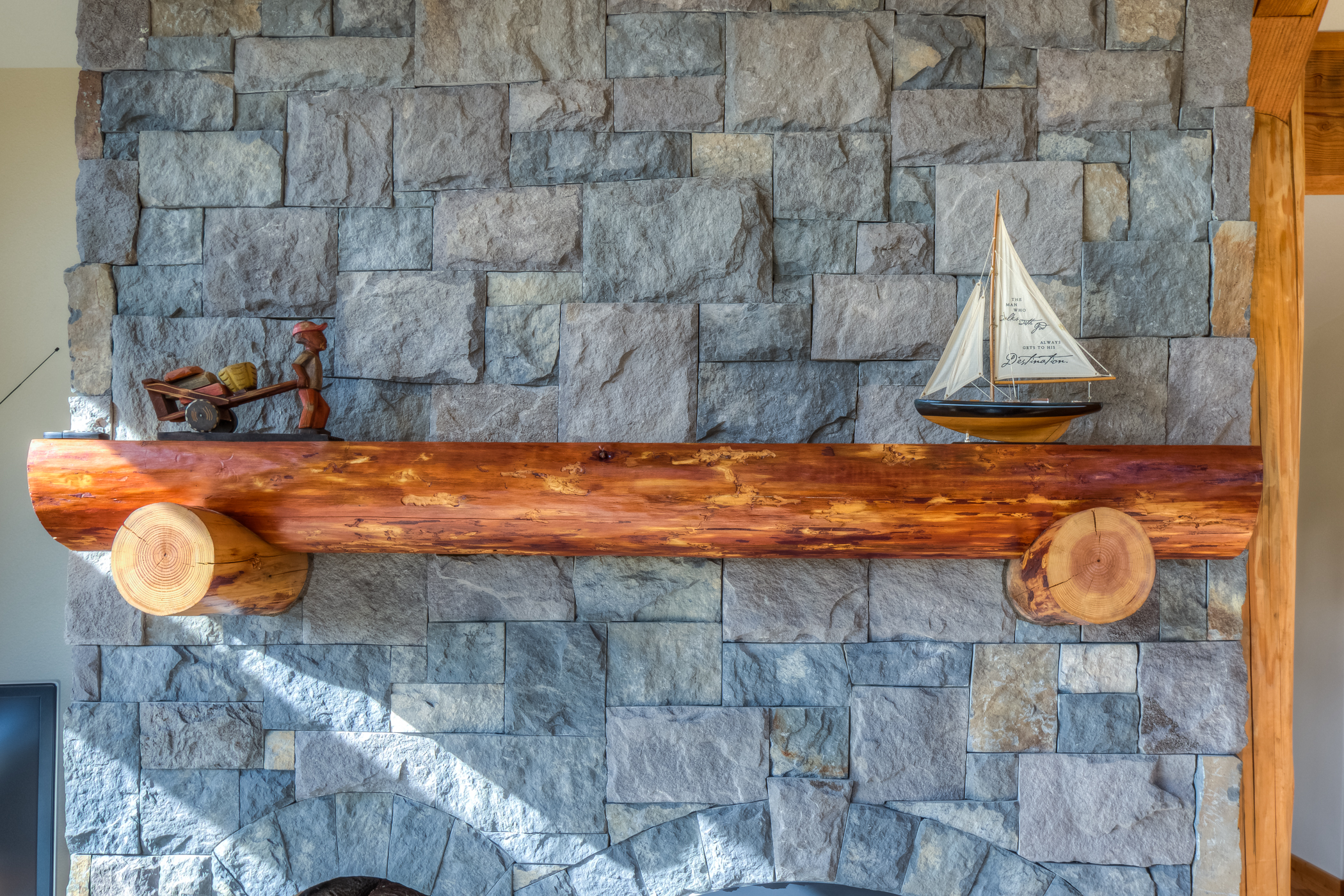
By utilizing logs for the construction of this nautical feeling mantel, it falls squarely into the “coastal” category.

Timber sizing is designed to fit with the proportions of the trusses above. Any smaller and it would feel “weak”.
Mantels began to surface with European royalty as early as 500 AD. They became a place for art and self-expression. Some of these mantels were extravagantly ornate. Many would span whole walls and even had sculptures carved into them. Around the turn of the 17th century the stylings changed from English influence to Italian. This marked the end of the lavish mantel appearance. Simple mantels were now more common as the world became more and more sensible in its style and design. Since then, styles have fluctuated, sometimes using sculptured corbels, sometimes extremely basic. The mantel has now evolved into the basic styles we see today.
“Mantels in the past, have been used primarily to display the family portrait.”
What does a mantel symbolize?
A mantel symbolizes what is close to your heart. Fire and warmth are closely linked with survival. A fire in the kitchen is used for cooking and preparing food, which is necessary for survival, and a fire in the living room means safety and leisure. For me, this means family time, relaxation at the end of the day, and a late-night place for concentration and learning. As far as design goes, I love it when pragmatic solutions are combined with artistic creativity. I prefer having practical criteria to work with, a dilemma to solve and then using artistic creativity.

This Douglas Fir mantel has been burnt and then brushed to provide a striking finish with a defined grain pattern.
What does a mantel mean to you?
Hopefully you will have the answers to your questions upon finishing this article. You may want to pause and visualize your own mantel while you read this article. Keep a pen handy so you can jot down notes when you find inspiration!
Let me give you some examples of mantel styles and how the decision process has unfolded for other successful clients. This will give you an idea of how many layouts are available and which elements you can use to personalize your mantel:
– Pragmatic
– Western/Lodge
– Split Log Mantel
– European
– Contemporary
Matching your mantel to the surroundings ensures a cohesive look throughout the home.

Pragmatic Style
The Pragmatic Style is a simple, straightforward mantel to display family heirlooms. View the photo at the top of the page for an excellent example of a well-placed pragmatic mantel. For those who want a simple, straightforward design, the decision process will include the following questions:
1) What width is needed to place items upon the mantel?
2) What is a desirable mantel height?
3) What are the height and width criteria regarding fire safety?
4) How big should our mantel be?
For the pragmatic type, a mantel is just simply a mantel. They will think about embellishments only if it will serve a practical purpose, such as rounding or easing sharp edges, Corbels will be considered only if they are needed for support and the style question is simplified to “What dimensions will feel right for the fireplace and the room?”

Western Lodge Style
Two defining factors of the Western Lodge style are: The size of the mantel and the simplicity of construction. If metal is used, it will be simple, rough and potentially rusted.
A horseshoe or two may be mounted on the face of the mantel for flair. Sometimes a western theme will be cut into the fire grate doors, such as a howling wolf or the silhouette of a forest and mountain. The fireplace itself is usually laid in stone, as a brick or small stone fireplace simply would not fit the Lodge style. All of this reinforces the need for holistic design and how we must balance it with the big picture.
Split Log Mantel
Imagine a sprawling western ranch with a full timber frame home. If we entered into the great room, how high should the ceiling be? For this style, an eight to nine foot ceiling would add to the markedly western feel. A heavy stone fireplace with a low, wide firebox, no hearth and a long mantel set at eye level would be the basic parameters for this style. Now you’ll decide on wood versus stone corbels, metal connectors or embellishments, exact sizes, profiles, etc.
A Mountain Lodge style mantel, while similar in regard to Western style and size, may be different in a few ways. The factors which will affect your mantel style the most will be ceiling height, style (vaulted or sloped ceiling) and if you want a loft area. With the added height and space, an elevated hearth and higher mantel fit well. Perhaps multiple mantels stepping up the chimney would be an excellent showcase for various pictures, wild game mounts and other trophies. A freestanding fireplace may need a four-sided mantel, which creates a warm, inviting place to come together and nestle next to the heat.
European Style
It is hard to imagine a European style mantel without conjuring up a picture of old castles, noble knights, royalty, etc. Like the Western Lodge style, the European style relies upon wood and stone for the starting canvas.

Elegance is added in timber sizing, embellishments, and arches. A European style mantel could have complex joinery, ornate metal craft, and perhaps even a relief carving on the mantel’s face. Unlike the Western Lodge mantel, finesse is required to achieve the European design.
Here at Arrow Timber Framing, the most common European mantel we have produced has utilized curved corbels and a hand-hewn texture. This style also goes well with an Italian/Mediterranean atmosphere. Italian/Mediterranean styling incorporates a lot of stucco (both inside and outside) and exposed timbers on the ceiling. Knowing a skilled blacksmith definitely will be an asset for you to truly capture the old European style of mantel. He can give you square-head nails, hand-hammered straps, forged lantern hooks, and anything else you may need to accomplish the authentic look.
Contemporary
Sleek lines, uncluttered, atypical combinations, and open design can all be attributed to this Contemporary style. Visual surprise is the “Ace in the Hole” of contemporary design. With that in mind, an open fire pit with a large hanging hood in lieu of a mantel will add the most value to your atmosphere.

Inlaid silver or gold artwork will add a touch of class and make people smile. A plank of reclaimed wood supported by tension guy wires could fit well with the fireplace materials you intend to use. I do caution against trying to be original or do something new driven solely by the desire to be different. Change for the sake of change may not be beneficial. Above all, you want your choices to be a reflection of you.
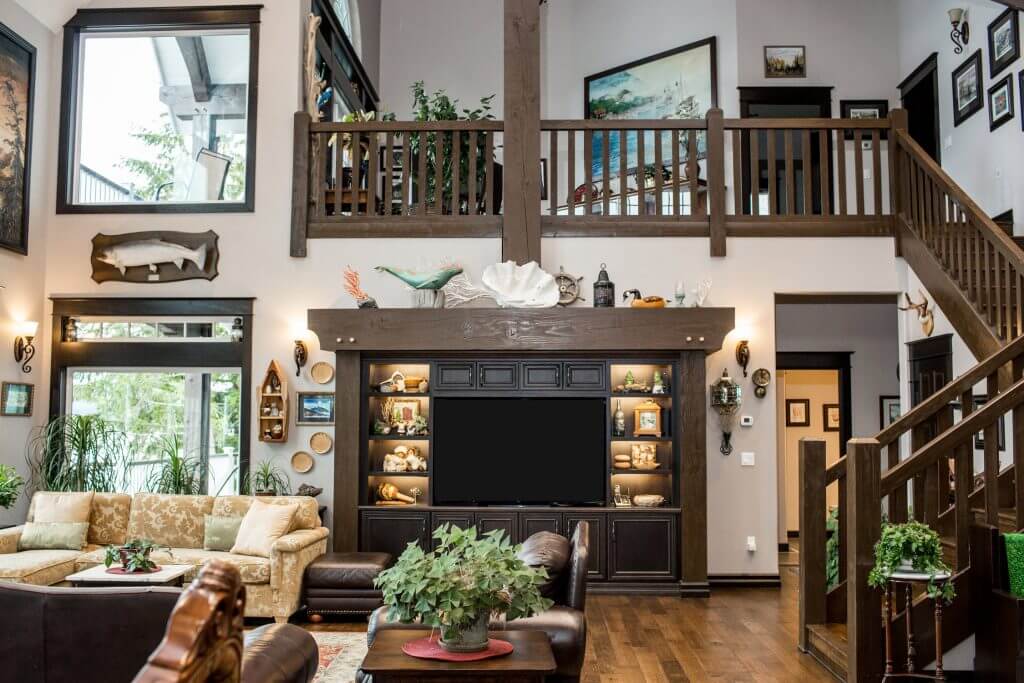
This mantel flairs up on either side with an elegant curve that gives mild “flag” vibes while keeping with the reserved, darkened tones of the rest of the timbers.
The take-away for you today is that your choices of design are wide open. Even with something as simple as a mantel, you get to have fun getting what you want. To really expand your enjoyment and self-expression, let’s get started on your timber frame project today!
Building Your Single-Story Timber Frame Dream Home
Post & Beam Timbers | Drying, Species & Shrinkage
7 Reasons You Should Build Green
Are Exposed Beams Directly Linked to Stability?
How to Artistically Mix Logs and Timbers
How to Avoid a Structural 98lb Weakling
Insulation Values Myth: The “R” Fairy Tale
Full Timber Frame, Hybrid Timbers or Small Accents?
I Want It Big! The Veach Home Project
A Brief History and Evolution of Timber Framing
Timber Framing a 10K Sq. Ft. House
3 Unique Approaches to Timber Floor Plans
Differences Between Log, Timber, Post & Beam
8 Timber Mantels - Inspiration Is Easier Than You Think!
The Sherertz Family Project with GRO Outdoor Living
Trial by Fire: The Birth of ATF
Tips and Ideas to Make Timber Maintenance Fun
What Type of Beam Finish is Best for You?
Where To Draw the Line For Timber Decor in Your Home
Timber Framing: Why it's a 'Green' Technique
What It's Like Owning a Giant Sawmill
Videos: A Timber Frame Lakehouse
Video: Couple Decides on Timber Framing
Video: When Feng Shui Goes Wrong!
Structural Lessons from 500-Year Old German Timber Framing






